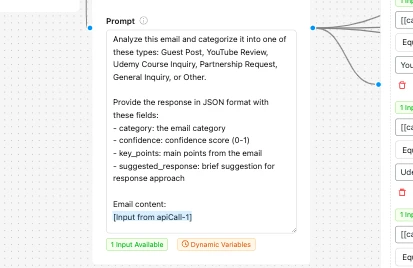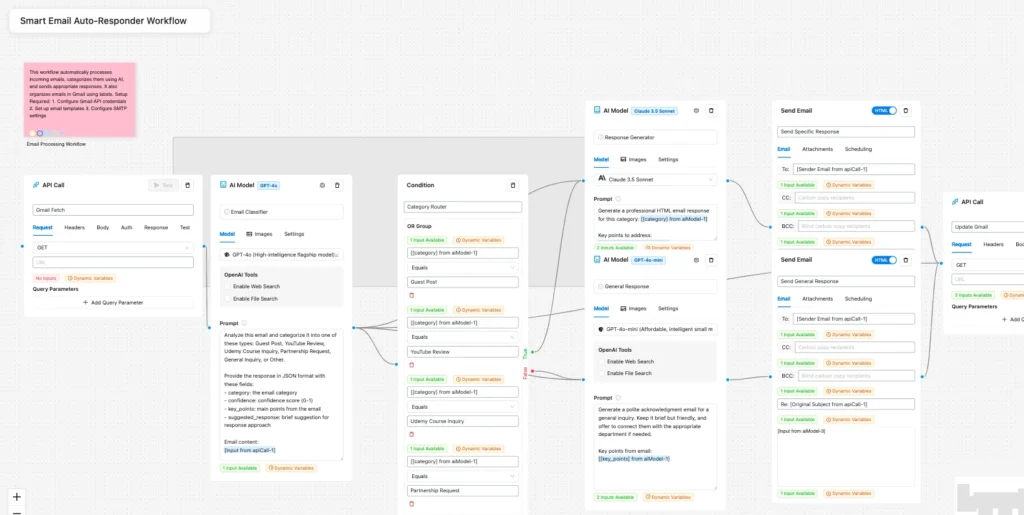Building Agentic AI Workflows for Smart Email Auto-Responders
Who Should Implement This AI Strategy?
Businesses and content creators who manage high volumes of emails daily will benefit significantly from this AI strategy. Marketing teams, customer support departments, and content managers needing to streamline communication processes can implement this workflow to enhance productivity and customer engagement.
What Operational Hurdles Does This Overcome?
Manual email management can be time-consuming and prone to errors. This workflow overcomes the challenge of sorting through numerous emails, ensuring timely and accurate responses, and maintaining organized communication. It eliminates inefficiencies in manual processes, allowing teams to focus on more strategic tasks.
How Agentic AI Executes Tasks
Agentic AI, through the AI Workflow Automation plugin, executes tasks by autonomously processing and categorizing emails. It uses the AI Model Node – GPT-4o to analyze email content and make decisions based on predefined criteria. This intelligent automation ensures that each email receives a tailored response, enhancing customer satisfaction and operational efficiency.
Essential Plugin Features
-
- Gmail API Integration: Connects to Gmail to monitor and process new emails.
-
- AI Model Node – GPT-4o: Analyzes email content and categorizes inquiries.
-
- Email Sending Node: Sends tailored responses based on AI classification.
Building Smart Email Auto-Responder Workflow
Step 1: Trigger Setup
Begin by setting up an API Call Node to connect to Gmail. Configure it to trigger the workflow when a new email is received. Use appropriate filtering logic to ignore internal addresses and avoid replying to already processed emails.
Step 2: AI Model Configuration
Next, integrate the AI Model Node – GPT-4o to analyze the content of incoming emails. This node will categorize the emails into types such as Guest Post, YouTube Review, or Udemy Course Inquiry, enabling the workflow to respond appropriately.

Step 3: Action Implementation
Configure an Email Sending Node to dispatch tailored HTML responses based on the categories determined by the AI model. Set up SMTP settings to send emails from your domain, ensuring professional communication. Additionally, use the API Call Node to update Gmail, marking emails as read and applying organizational labels, and integrate with a CRM like Brevo to update contact details.

Customizing Your Agentic Smart Email Workflow
To further customize your agentic AI workflow, explore the workflow template library. This resource provides various templates that can be adapted to suit your specific needs, ensuring your email auto-responder workflow is both efficient and effective.
Business Value of Agentic AI in Smart Email Automation
By implementing this Smart Email Auto-Responder Workflow, WordPress users can significantly reduce the time spent on routine communication tasks. The AI-driven classification enhances response accuracy, while integration with CRM systems ensures organized email handling. This results in improved customer engagement and operational efficiency, allowing businesses to focus on growth and innovation.